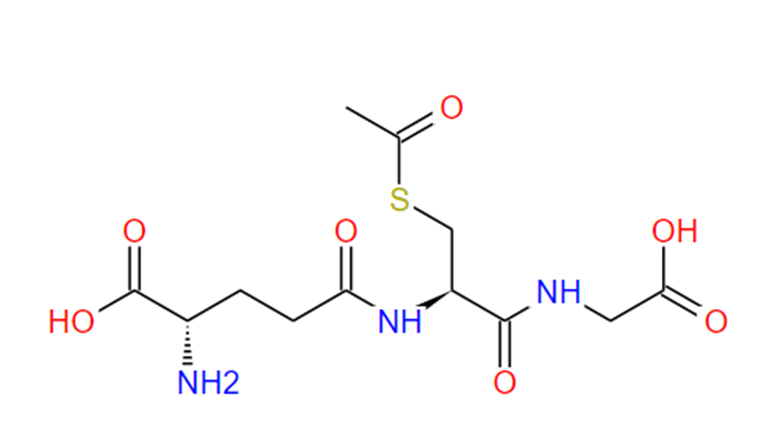
S-Acetyl-L-glutathione is a derivative of glutathione and an effective antioxidant and cellular protector. Glutathione is a peptide composed of three amino acids, including glutamic acid, cysteine, and glycine. In S-Acetyl-L-glutathione, the hydroxyl group (OH) of glutathione is replaced by an acetyl group (CH3CO).
S-Acetyl-L-glutathione offers several advantages over regular glutathione. It has better stability and solubility and is more readily absorbed by cells. Due to the presence of the acetyl group, S-Acetyl-L-glutathione can enter cells more easily and convert to regular glutathione within the cell.
S-Acetyl-L-glutathione has some applications in the medical and health field. It is believed to enhance cellular antioxidant capacity, alleviate oxidative stress and inflammatory responses, and potentially have positive effects on cellular health and organ protection. Some studies also suggest that S-Acetyl-L-glutathione may be beneficial in combating the aging process and have potential roles in the prevention and treatment of certain diseases.

